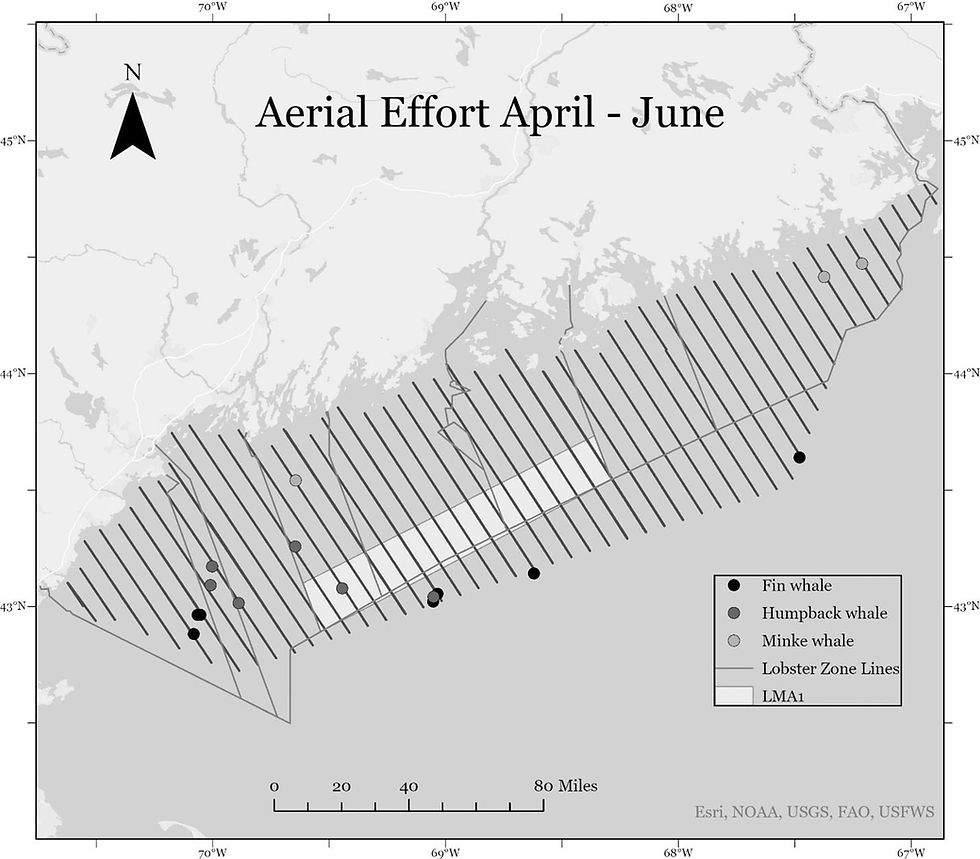DFO Right Whale Report Expresses Cautious Optimism
- Guest Writer
- Nov 6
- 2 min read
Reprinted from Seafood News

Snow crab traps also pose a risk to right whales. Navigator photo.
Scientists with Canada’s Department of Fisheries and Oceans (DFO) have presented a new comprehensive update on the North Atlantic right whale population, finding shifts in the population and the possibility of recovery if the right actions are taken.
The review was part of a Recovery Potential Assessment (RPA) for the whales and assessed a range of different topics concerning the species, including abundance, distribution, threats, and recovery targets. The North Atlantic right whale is critically endangered and hit a low of 358 individuals in 2020.
That population has slowly increased since that low, and a recent estimate by the North Atlantic Right Whale Consortium places their numbers at 384. DFO said the population projections found that if threats to the species like vessel traffic, fishing activities, underwater noise, and industrial pollution are managed, the population can recover to a healthy state “in the next 25 to 100 years.”
The plight of the right whale is a major issue for both U.S. and Canadian fisheries, with the U.S. lobster fishery going through a multi-year battle with the National Marine Fisheries Service over the fishery’s risk to the endangered whales.
Canada’s snow crab fishery faced similar pressure, as it came under fire for right whale entanglements and U.S. senators called on the country to increase protections or risk import prohibitions. Since that controversy, fisheries in both countries have taken steps to limit interactions with right whales, and DFO said continued action will be key to the species’ recovery.
“Since 2018, DFO has implemented numerous measures to prevent entanglements of NARW, including targeted whale surveillance, fishing area closures when and where NARW are detected, testing and trialing of whale-safe fishing gear, and taking action on ghost gear,” DFO said.
The DFO said the whales’ territory has continued to expand and there are now right whales as far north as the Gulf of St. Lawrence due to rising ocean temperatures, which means scientists and fisheries will need to continue to monitor the situation.
DFO's report found:
Population projections show that if threats are adequately mitigated, the
NARW population can recover to a healthy state in the next 35 to 100 years.
Known feeding areas for NARW have expanded to as far north as the Gulf of St. Lawrence. This is due to rising ocean temperatures and declines in prey in NARW traditional feeding areas.
The biggest threats to NARW survival and recovery is human activity, particularly vessel strikes and fishing gear entanglements.



Comments